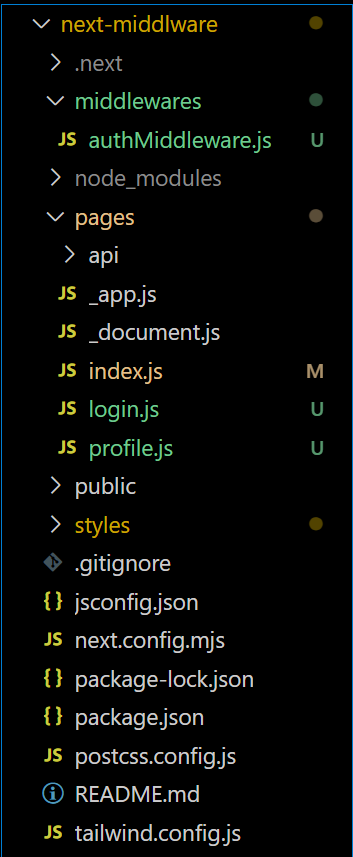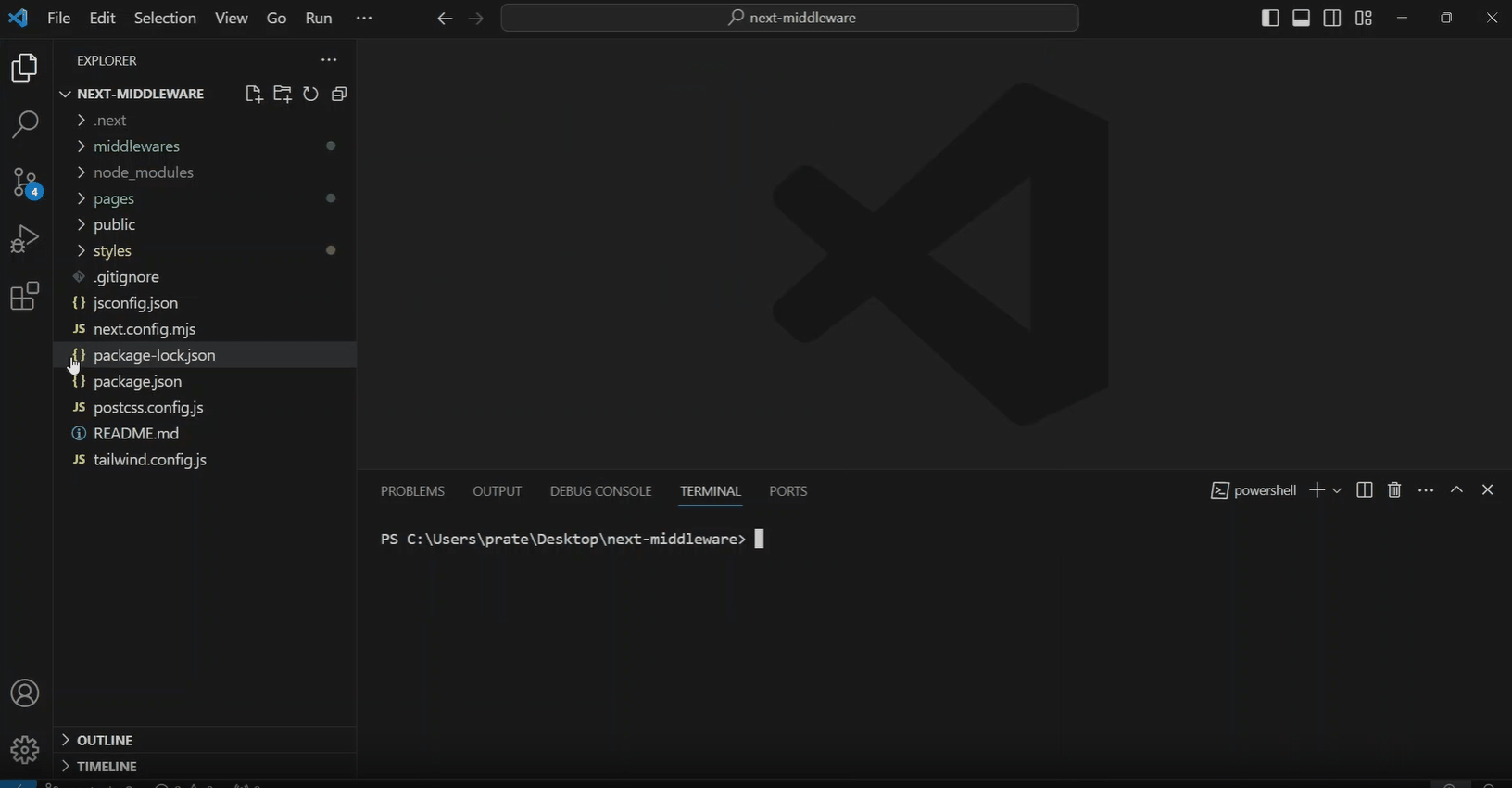Next JS Middleware: Extending Functionality in Your Application
Last Updated :
13 Feb, 2024
Middleware plays an important role in creating backend applications which are used to intercept incoming requests, perform actions, and modify responses before send to routing handlers. In this article, we will understand middleware in Next.js by creating an authentication middleware.
Prerequisites:
What are Middlewares?
Middleware is a piece of code that redefines the functionality of your written logic. It enhances the logic and provides an additional capability. It has access to the request object (req), the response object (res), and the next function in the application’s request-response cycle. Middleware modifies a request before it reaches the destination. It is very helpful in performing tasks like authentication and data manipulation.
Syntax:
// Define your middleware function
const myMiddleware = (req: Request, res: Response, next: NextFunction) => {
// Middleware logic
console.log('Middleware executed');
// Call the next middleware function in the stack
next();
};
Functioning of a Middleware
- HOC Initialization – When using a middleware function with a component, the middleware function runs first.
- Middleware Logic – Middleware contains special logic related to middleware purposes. This logic may be authentication, authorization, or data fetching.
- Component Rendering – After the middleware logic runs, it decides whether to render a wrapped component or not.
- Conditional Rendering – If the middleware allows, the wrapped component is rendered with necessary props.
- Redirect or Alternative rendering – If the middleware logic denies rendering the wrapped component, the middleware performs a redirect to another page, an alternative component.
Example: In this example, We will secure the profile page within an authentication middleware with the help of a higher-order component (HOC) to envelop the profile page component. This higher-order component will interfere with the request to the profile page, ensuring that only users with valid credentials can access it.
Steps to Create a Next.js app
Step 1: Create a Next.js app by using the command provided below.
npx create-next-app next-middleware

Enter into the app directory created.
cd next-middleware
Step 2: Create the required files and folders as suggested in file structure.
File Structure:

file structure
The updated dependencies in package.json file will look like:
"dependencies": {
"react": "^18",
"react-dom": "^18",
"next": "14.1.0"
},
"devDependencies": {
"autoprefixer": "^10.0.1",
"postcss": "^8",
"tailwindcss": "^3.3.0"
}
Example: Add the following codes in the respective files.
Javascript
import React, { useEffect, useState } from "react";
import { useRouter } from "next/router";
const authMiddleware = (WrappedComponent) => {
const AuthComponent = (props) => {
const router = useRouter();
const [isAuthenticated, setIsAuthenticated] = useState(false);
useEffect(() => {
const username = localStorage.getItem("username");
const password = localStorage.getItem("password");
if (username === "geeksforgeeks" && password === "1234") {
setIsAuthenticated(true);
} else {
router.replace("/login");
}
}, []);
if (isAuthenticated) {
return <WrappedComponent {...props} />;
} else {
return null;
}
};
return AuthComponent;
};
export default authMiddleware;
|
Javascript
import React from 'react'
import authMiddleware from '../middlewares/authMiddleware'
const profile = () => {
return (
<div className='max-w-sm mx-auto mt-12
text-3xl bg-blue-400 text-white
shadow-3xl rounded-xl border p-10'>
<h1>
Hi I am the User, and I am Logged In
</h1>
</div>
)
}
export default authMiddleware(profile)
|
Javascript
import { useState } from "react";
import { useRouter } from "next/router";
const Login = () => {
const [username, setUsername] = useState("");
const [password, setPassword] = useState("");
const router = useRouter();
const handleLogin = () => {
localStorage.setItem("username", username);
localStorage.setItem("password", password);
router.push("/profile");
};
const handleKeyPress = (e) => {
if (e.key === "Enter") {
handleLogin();
}
};
return (
<div className="flex flex-col max-w-sm mt-12 space-y-3 mx-auto">
<h1 className="text-gray-600 text-2xl">Login</h1>
<input
className="border p-2"
placeholder="Enter username"
value={username}
onChange={(e) => setUsername(e.target.value)}
onKeyPress={handleKeyPress}
/>
<input
className="border p-2"
placeholder="Enter password"
type="password"
value={password}
onChange={(e) => setPassword(e.target.value)}
onKeyPress={handleKeyPress}
/>
<button
onClick={handleLogin}
className="border p-2 focus:bg-white focus:text-gray-400
focus:border bg-sky-600 text-white"
>
Submit
</button>
</div>
);
};
export default Login;
|
Step 3: To start the application run the following codes.
npm run dev
Output:

Share your thoughts in the comments
Please Login to comment...